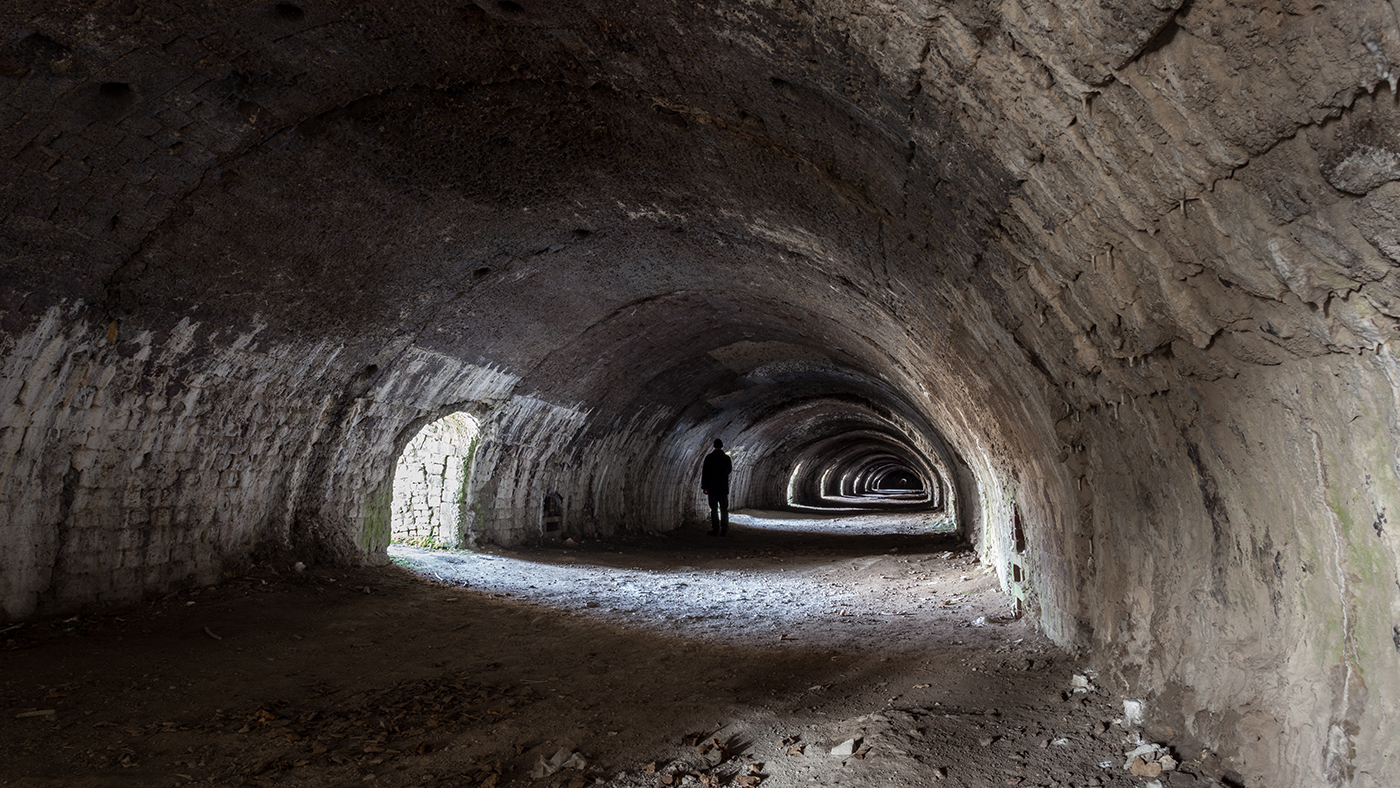Hoffman Kiln, Langcliffe
View inside the Hoffman Kiln near Settle taken 27th January 2017:

The Hoffmann kiln was built at Langcliffe, near Settle, in 1873 for the Craven Lime Company and is one of the few remaining Hoffman Kilns in the country. The kiln, which has 22 individual burning chambers, was used for the processing of limestone into lime. At the time, lime was extremely useful: farmers used it to help their crops grow, local building companies used lime for mortar and lime was also used in other industries such as leather-making (tanning), textiles and paper-making.
The kiln is lined with firebricks to withstand the intense heat that was produced inside. In the roof are small chutes through which crushed coal was dropped to keep the limestone burning. At floor level there are flue holes in the walls. These drew air from the outside under the burning limestone and the smoke went up the central core of the kiln to the chimney. (The chimney was due to have a ceremonial demolition after the kiln ceased to operate but it fell down the day before the ceremony without anyone there to see it!).
Limestone blocks from the nearby quarry were stacked by hand in the burning chamber. The complicated flue system allowed the heat and speed of the burn around the kiln to be carefully regulated. As one chamber burned, waste heat warmed limestone blocks in the next two or three chambers. Behind the burning zone, two or three chambers were left to cool down before the lime could be shoveled out and loaded onto railway wagons waiting in the sidings next to the kiln. Limestone was burned continuously in a circuit around the kiln. It took an average of six weeks to complete one circuit.
The Hoffman Kiln at Langcliffe closed in 1931.
The kiln is lined with firebricks to withstand the intense heat that was produced inside. In the roof are small chutes through which crushed coal was dropped to keep the limestone burning. At floor level there are flue holes in the walls. These drew air from the outside under the burning limestone and the smoke went up the central core of the kiln to the chimney. (The chimney was due to have a ceremonial demolition after the kiln ceased to operate but it fell down the day before the ceremony without anyone there to see it!).
Limestone blocks from the nearby quarry were stacked by hand in the burning chamber. The complicated flue system allowed the heat and speed of the burn around the kiln to be carefully regulated. As one chamber burned, waste heat warmed limestone blocks in the next two or three chambers. Behind the burning zone, two or three chambers were left to cool down before the lime could be shoveled out and loaded onto railway wagons waiting in the sidings next to the kiln. Limestone was burned continuously in a circuit around the kiln. It took an average of six weeks to complete one circuit.
The Hoffman Kiln at Langcliffe closed in 1931.